- Home
- Rudy Rucker
Transreal Trilogy: Secret of Life, White Light, Saucer Wisdom
Transreal Trilogy: Secret of Life, White Light, Saucer Wisdom Read online
Transreal Trilogy
The Secret of Life
White Light
Saucer Wisdom
Rudy Rucker
Transreal Books
Copyright (C) Rudy Rucker, 2014.
The cover art is from the painting, Saucer Wisdom, by the author. The author photo is from 1967, and is by Sylvia Rucker. The cover layout is by Georgia Rucker Design.
Paperback ISDN: 978-1-940948-04-1
Ebook ISDN: 978-1-940948-05-8
Hardback ISDN: 978-1-940948-06-5
The first edition of The Secret of Life was published in hardback in 1985 by Blue Jay Books. An ebook edition was published in 2001 by Electric Story. No paperback edition appeared.
Previous paperback editions of White Light appeared from Ace Books in 1980, Wired Books in 1997, and Four Walls Eight Windows in 2001. Four Walls Eight Windows did an ebook edition as well. No hardback edition appeared.
Saucer Wisdom appeared in 1999 from Tor Books in hardback, followed by paperback and ebook editions.
The characters and scenes are depicted imaginatively, and no factual representations of real-world people are intended.
Transreal Books
Los Gatos, California
www.transrealbooks.com
Preface
Transrealism
What is “transrealism”? Transmuting your ordinary life into science fiction. I came up with the word transreal after seeing the phrase “transcendental autobiography” in a blurb on the cover of Phillip K. Dick’s A Scanner Darkly. Dick was, of course, a quintessentially transreal author. And my favorite SF writer Robert Sheckley was another.
Early in my writing career, my friend Greg Gibson said, “It would be great to write science fiction and have it be about your everyday life.” I took that to heart. Using myself and my friends as characters in my science-fiction novels appealed to me. This trick had a beatnik tinge to it, and it made the books easier for me to write.
In 1983, I wrote, “A Transrealist Manifesto.” A young man’s impassioned proclamation. It appeared in the Bulletin of the Science Fiction Writers of America. I’m reprinting it here, right after the Preface. Over the years, the notion of transrealism has achieved some currency in SF criticism, appearing as a Wikipedia entry and in the title of a book by the writer/critic Damien Broderick: Transrealist Fiction.
Are all of my novels transreal? Not in the strongest sense of the word. I wouldn’t want to cast my friends and family into each of my works—as if I were some Ingmar Bergman continually making movies with the same little troupe of actors/family/friends. My troupe would get tired of this, and so would my readers.
In many of my novels, I collage together assorted parts of various people, rather than copying any one person whole. I imagine the inner lives of the people I encounter. I jot down remarks that I hear on the street, and make written sketches of behaviors I see. And I do often endow my characters with ideas, emotions and experiences that I’ve personally had. But I don’t put a specific “Rudy” character into every book.
So my novels are transreal to varying degrees—some more, some less. My three most transreal tales are to be found in the omnibus you’re reading. I’m printing them in the order of the events they describe—as if in a transrealized myth of my life.
The Secret of Life: A 60s college student learns he’s a saucer alien!
White Light: A hipster math professor travels to the afterworld!
Saucer Wisdom: A cult author tries to write about alien abductions!
If I were to add one more transreal novel to this omnibus, I’d pick The Hacker and the Ants, which deals with a period when I was working as a programmer at Autodesk. “A spaced-out hacker destroys the web!” But I’m going to save that book for a “Silicon Valley Series” of my novels—which may also include Mathematicians in Love, Spaceland, and Jim and the Flims.
Were there room, another novel that I might have included in the Transreal omnibus is The Sex Sphere, based on a period when my family and I were living in Heidelberg, Germany. “Goaded on by a giant ass from the fourth dimension, a feckless father builds an atomic bomb!” Ah yes, the merry life of a writer…
In the rest of this preface I’ll make specific remarks about my three most transreal novels of all: The Secret of Life, White Light, and Saucer Wisdom.
The Secret of Life
In full-on transreal fashion, The Secret of Life started as a Kerouac-style memoir-novel called All the Visions, which depicts my alter-ego Conrad Bunger’s life up until the point when I typed out the Visions—this was during two exultant weeks in the summer of 1983. I was thirty-seven, and living as a freelance writer in Lynchburg, Virginia.
All the Visions was a memory dump of tales about my ongoing quest for enlightenment The characters had made-up names. I meant for it to be a beatnik novel like On the Road. To fully mimic Kerouac, I wrote All the Visions on a single long roll of paper. I rigged up the roll on a length of broomstick propped up behind my good old rose-red IBM Selectric typewriter. The typed scroll was about eighty feet long when I was done. Nobody wanted to publish it.
No matter. The first part of All the Visions served as source material for my transreal SF novel, The Secret of Life. This book is what they used to call a bildungsroman, that is, a novel of a young person’s education. Secret is set during my high-school and college years—during which the photo on the back cover of this omnibus was taken. Having my character learn that he’s a UFO alien is a nice objective correlative for the classic teenage sense that you couldn’t possibly be the child of the “parents” you’re living with.
I spent nearly a year working on The Secret of Life. It felt important to me, as if I were deciphering the patterns of my past. And I was hoping that Secret might break me out of the SF ghetto and into the world of mainstream lit. While writing it, I was rereading the existentialist Jean-Paul Sartre’s memoir/novel Nausea, which happened to be a high-school favorite of mine. And I found four apt quotes from Nausea to use as the epigraphs for the four parts of The Secret of Life.
I sold The Secret of Life to Bluejay Books along with a more traditional SF novel of mine: Master of Space and Time. Bluejay published The Secret of Life in 1985 in a hardback edition, but soon thereafter they went bankrupt. Secret has never appeared in paperback.
As for All the Visions—eventually it appeared from a small press, and now I’m republishing it in concert with Transreal Trilogy. By the way, some of the Visions material that wasn’t used in Secret can be found in White Light.
White Light
Like Alwin Bitter of White Light, I was an assistant professor of mathematics at a state college in upstate New York from 1972 to 1978. I lost my job there, and spent two years as a visiting scholar at the University of Heidelberg, thanks to a miraculous grant from the Alexander von Humboldt Foundation. My research in Heidelberg was to be on Cantor’s Continuum Problem, an arcane question about levels of infinity. Early in 1979 I despaired of making any serious mathematical progress, and I wrote the novel White Light instead—followed by my novel Software in 1980. I had a very productive two years in Heidelberg.
Underground comics were a major influence on Wight Light. I loved the sex, drugs, and countercultural humor of Zap Comix. Another influence was the early French parasurrealist author René Daumal. His strange, unfinished book Mount Analogue is about an expedition upon a mysterious mountain that unites Heaven and Earth. A final influence was Franz Kafka. I read all of Kafka’s journals while in Heidelberg. Kafka�
�s friend Max Brod once said that when Kafka read The Metamorphosis aloud to him, Kafka laughed so hard that he fell out of his chair. Franx on his back, with all eight, or is it six, of his legs kicking.
When I finished the manuscript for White Light in 1979, I sent it to the Scott Meredith Literary Agency because I’d read an article by Philip K. Dick in which he mentioned that they were his agents. They charged me a couple of hundred dollars to read the manuscript. Their reader sent me a savage critique of my book, and told me it was unpublishable. Asshole that he was. I remembered an adage from Robert Heinlein: “Leave your work on the market until it sells.” So I sent the manuscript directly to some publishers myself.
I had just read Ian Watson’s Miracle Visitors, which I thought to be a wonderful book on the same wavelength as White Light. Miracle Visitors was published by Ace Books, which struck a special chord with me, as my hero William Burroughs’s first novel Junkie had been an Ace Book. I sent Ace my manuscript with a note saying, “This book is like Miracle Visitors, only better.” A few months later James Baen, then editor at Ace, wrote me back saying that Ace wanted to publish White Light.
In the meantime I’d been to my first science-fiction convention, Seacon 1979, in Brighton, England (recall that I was living in Heidelberg at the time). While there, I’d met Maxim Jakubowski, who was editing a new line of books for the Virgin record company. I’d given Maxim a copy of the White Light manuscript, and when he heard that Ace was going to publish it, he said he wanted to publish a British edition.
Virgin got the book into print a bit faster, as White Light was very nearly their first book. For some bizarre punk reason they sent me the proofs in “negative” form, printed as white type on black paper. I made corrections using a white pencil, but they didn’t bother using my corrections, so the Virgin edition has a lot of errors in the text. It came out from them in, I think, summer, 1980, along with such other Virgin titles as Rock Star’s Underwear and The Sid Vicious Family Album. To my deep satisfaction, the Virgin cover referred to White Light as “the future cult novel of the 1980’s.”
The properly proofread Ace version of White Light came out in the fall of 1980. An odd thing about the Ace edition was that the cover gave the impression that the book was a conventional exploration of near-death experiences. “First, Life After Death, then, Illusions, and now—White Light.” But some other Ace flack caught the tone much better on the splash page: “Albert Einstein! Georg Cantor! David Hilbert! Donald Duck! The Secrets of the Universe Revealed!”
While I was writing White Light, I was also working on a nonfiction book called Infinity And The Mind, probably my best-selling book ever. In some sense both books are about the same thing: How can the human mind perceive the Absolute Infinite? If White Light leaves you hungry for more specific information about the science and philosophy of the infinite, check out the nonfiction version.
I still believe the basic premises of White Light: that God—or the Absolute, or the Big Aha—is a blinding white light which it is possible for a human to directly perceive, and that this cosmic One is located at a nexus where Zero and Infinity are the same. When things get tough, I find it relaxing and uplifting to imagine that I’m merging with the One. Just like Felix Rayman, falling into the white light.
Saucer Wisdom
By 1997 I was an established writer, but not making enough money off it to live on. My day job was being a computer science professor in Silicon Valley. My friend Mark Frauenfelder had gotten a job as an editor at Wired magazine in San Francisco. Mark was part of a group developing a new line of “Wired Books.” Naturally I thought of selling them something. I was imagining a book about fractals, chaos, artificial life, cellular automata—my gnarly new computer science interests, in other words. But Wired thought this idea was too been-done.
Mark was also editing a zine called bOING bOING, which later evolved into the very successful blog Boing Boing. I’d written a column for the zine in which I mentioned a futuristic mind-recording device that I called a lifebox. So now Mark said, “Why don’t you pitch us a book of future speculation about stuff like the lifebox?” And I was into that. The close of the millennium seemed like a good time for futurism.
And then the other Wired editors chimed in. “There should be a playful frame for your future speculations. I mean how do you know this is all going to happen? Should you go to the future in a time machine?” I decided it would be nice to have a UFO taking someone into the future.
I’d always wanted to write about UFOs, as I felt there wasn’t enough good SF about UFOs. And I’d certainly noticed Whitley Strieber’s huge commercial success with Communion. So it seemed like a good idea to write about UFO abductions. But rather than having me claiming to be the one abducted, I decided to have it be someone I knew.
Meanwhile my old friend and fellow author Greg Gibson came to town—Greg being the transreal model for the “Ace Weston” character in The Secret of Life. A crucial pitch-meeting with Wired was coming up, and somehow I got the idea that, to really clinch the deal, Greg should pose as my UFO-abductee friend.
I’d already fixed on the last name of “Shook” for this character because, when I almost got drafted for the Vietnam war in 1967, there’d been a hapless fellow conscript called Shook, and his name had stuck in my mind. When I started talking to Greg about having him pose as Shook, he said something about becoming my Frankenstein’s monster, and we decided the guy’s first name should be Frank.
So Greg and I went to the meeting, and to encourage Greg to come, I recklessly said I’d pay him two percent of my advance. Greg did a great job at the meeting. He had long hair, and he’s a weathered-looking guy, almost like a homeless Viet vet. He came on as very nervous and tetchy.
Mark Frauenfelder and the other young Wired Books editors totally bought into it. Midway through the meeting it “got to be too much” for Greg, and he stalked out. And for a few minutes the editors really didn’t know if my UFO abductee friend was real or not.
But after a bit I let them off the hook, and I told them, no, it had been an act. But they were dazzled by the presentation, and I scored the biggest advance that I ever got for any of my books, fiction or nonfiction, something like $50K.
The Wired people were leaning towards promoting Saucer Wisdom as really being true, doing a full Whitley Strieber thing. And then maybe in a year we’d reveal that the book had been a hoax, and get another little hit of publicity. But in the coming weeks, I began getting more and more uncomfortable with the idea of carrying this out.
Greg was fully into his Frank Shook trip by now, and he was leaving disturbing messages on my answering machine. Messages arguing about my plans for the book, and even telling me not to mention UFOs. Also I was having internal conflicts over whether I should give Greg a cut of my book advance. A thousand dollars! I didn’t want to pay him, but I’d said I would, and I couldn’t talk him out of it. With great resentment, I gave him the grand I’d promised. this was happening in March, 1997, right before I started actually writing the book.
The book had a tight deadline and I was in a state of high anxiety. The project was getting off to a very weird start. I was a mess. Transrealism was the only way out. I put all my fears and misgivings into the book. As a way of transrealizing my turmoil about paying Greg, I had the book’s narrator get into a quarrel about money with Frank Shook.
I was also becoming a little frightened of the whole UFO subject. What if they were real? What if the aliens came to get me? To help get a handle on things, I spent some time with my science-writer friend Nick Herbert who lives in Boulder Creek, California. Nick loves to theorize about UFOs. He was my second Frank Shook inspiration, if you will. Nick and I talked about UFOs over lunch at a restaurant called Adelita’s in Boulder Creek, and this lunch served as model for my lunch with Frank. Nick’s house is not unlike Frank’s.
My third Frank Shook inspiration was my artist friend Dick Termes, not s
o much for the way he acts, as for where he lives, which is in North Dakota. Dick lives in a dome-shaped house and he paints on spheres. He’s a remarkable man. In order to come up with a finale for the novel, I flew out to visit Dick in North Dakota—something I’d never done before, but had always wanted to do—and while I was there, I drove from Nick’s house to the Devil’s Tower and spent a day there.
When I finished the first draft of Saucer Wisdom, in November, 1997, Wired folded their book division. I got to keep most of the advance. By the way, at this point I’d gotten insanely bitter about having paid Greg that thousand. To put an end to the hard feelings, Greg gave it back to me. From his point of view, this had all been a kind of joke, and I’d taken it overly seriously. I was glad to get back to being Greg’s friend.
With Wired out of the picture, it was hard to find a publisher for my odd orphan book. Finally David Hartwell of Tor Books picked it up early in 1998. I even got another advance. Dave and his partner Kathryn Cramer did some good editing of the text, with Kathryn making some especially useful suggestions.
I wanted to have a lot of illustrative, diagrammatic illos for Saucer Wisdom, and I’d made rough drawings as I went along. The plan with Wired had been that my friend Paul Mavrides would redraw them—Mavrides being a well-known artist and underground cartoonist. But now Hartwell said something like, “Why not save money on the project and use Rudy’s drawings? They’re lively and charming. They’re like the drawings a professor might put on the blackboard in a lecture. And how technically proficient do they need to be, after all, if they’re supposed to be drawn by a guy who says he gets abducted by flying saucers?”
I was happy for the opportunity to go public with my art. I used to draw underground cartoons for the Rutgers University newspaper in the early seventies, and I’ve always felt that I can draw, even though some might argue that I can’t! I got a set of new pens and carefully redid all my drawings.

 Million Mile Road Trip
Million Mile Road Trip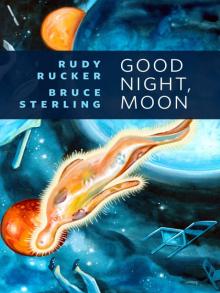 Good Night, Moon
Good Night, Moon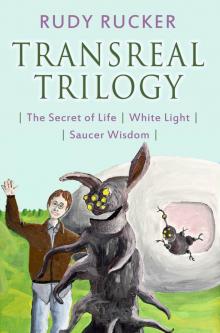 Transreal Trilogy: Secret of Life, White Light, Saucer Wisdom
Transreal Trilogy: Secret of Life, White Light, Saucer Wisdom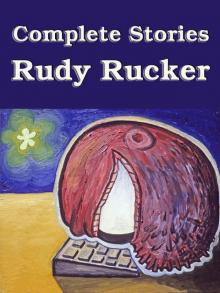 Complete Stories
Complete Stories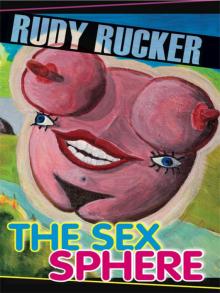 The Sex Sphere
The Sex Sphere Surfing the Gnarl
Surfing the Gnarl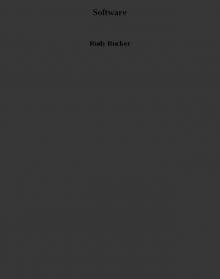 Software
Software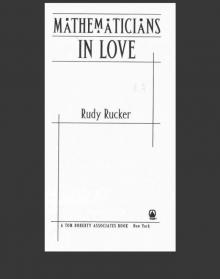 Mathematicians in Love
Mathematicians in Love Seek!: Selected Nonfiction
Seek!: Selected Nonfiction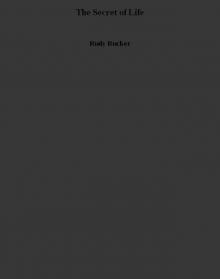 The Secret of Life
The Secret of Life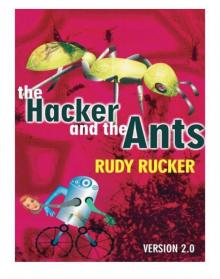 The Hacker and the Ants
The Hacker and the Ants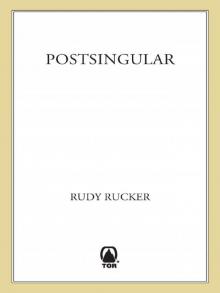 Postsingular
Postsingular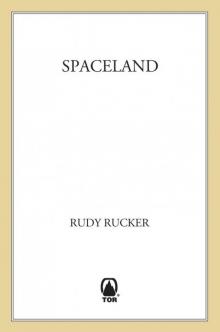 Spaceland
Spaceland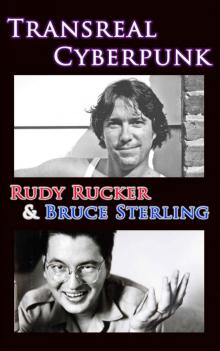 Transreal Cyberpunk
Transreal Cyberpunk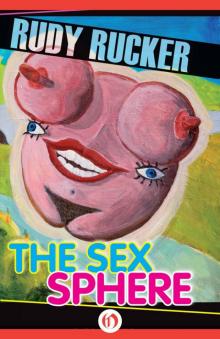 Sex Sphere
Sex Sphere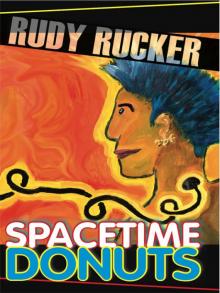 Spacetime Donuts
Spacetime Donuts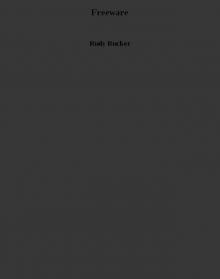 Freeware
Freeware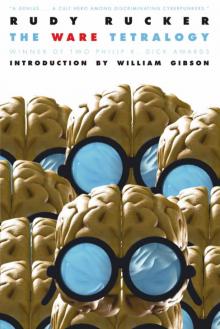 The Ware Tetralogy
The Ware Tetralogy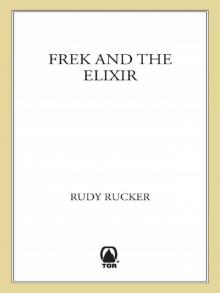 Frek and the Elixir
Frek and the Elixir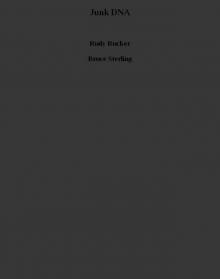 Junk DNA
Junk DNA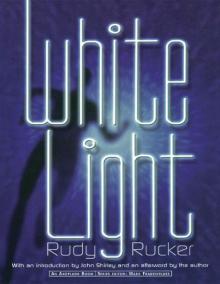 White Light (Axoplasm Books)
White Light (Axoplasm Books)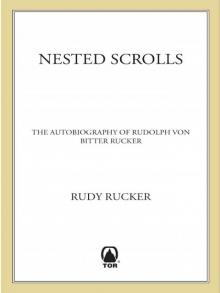 Nested Scrolls
Nested Scrolls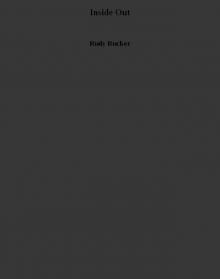 Inside Out
Inside Out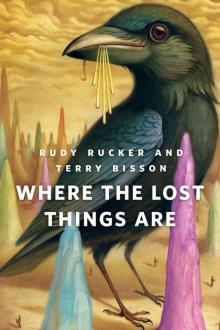 Where the Lost Things Are
Where the Lost Things Are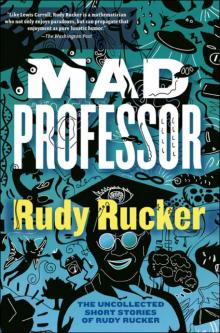 Mad Professor
Mad Professor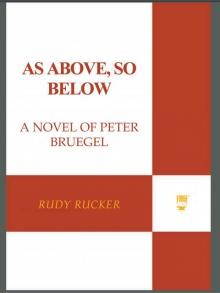 As Above, So Below
As Above, So Below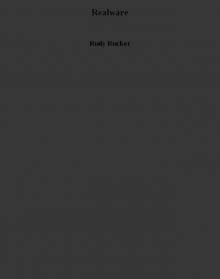 Realware
Realware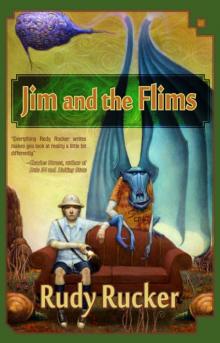 Jim and the Flims
Jim and the Flims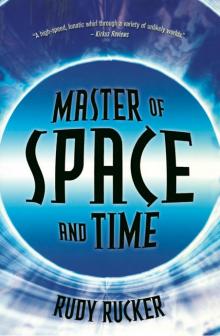 Master of Space and Time
Master of Space and Time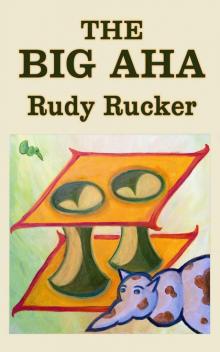 The Big Aha
The Big Aha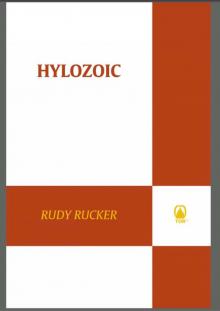 Hylozoic
Hylozoic